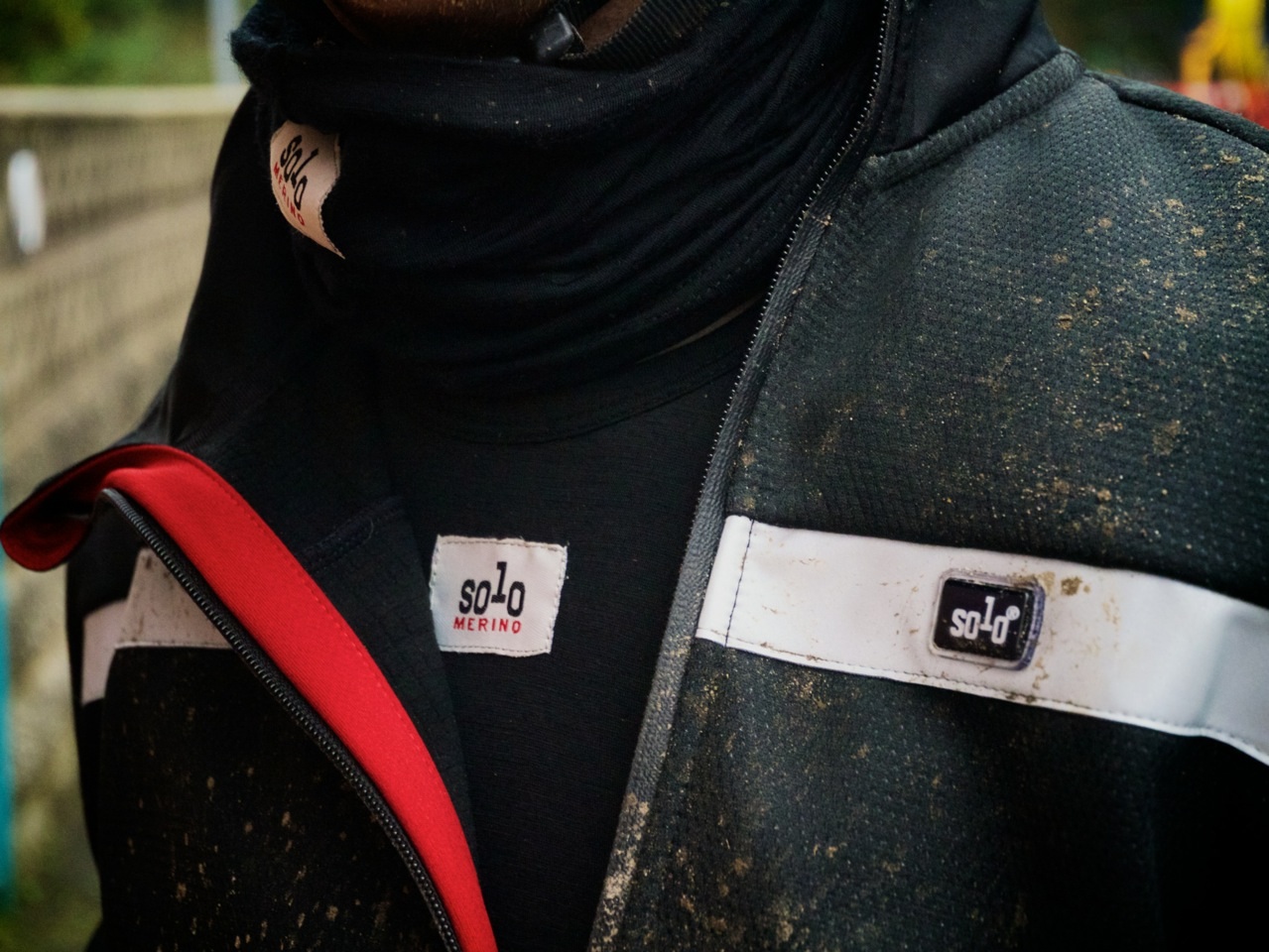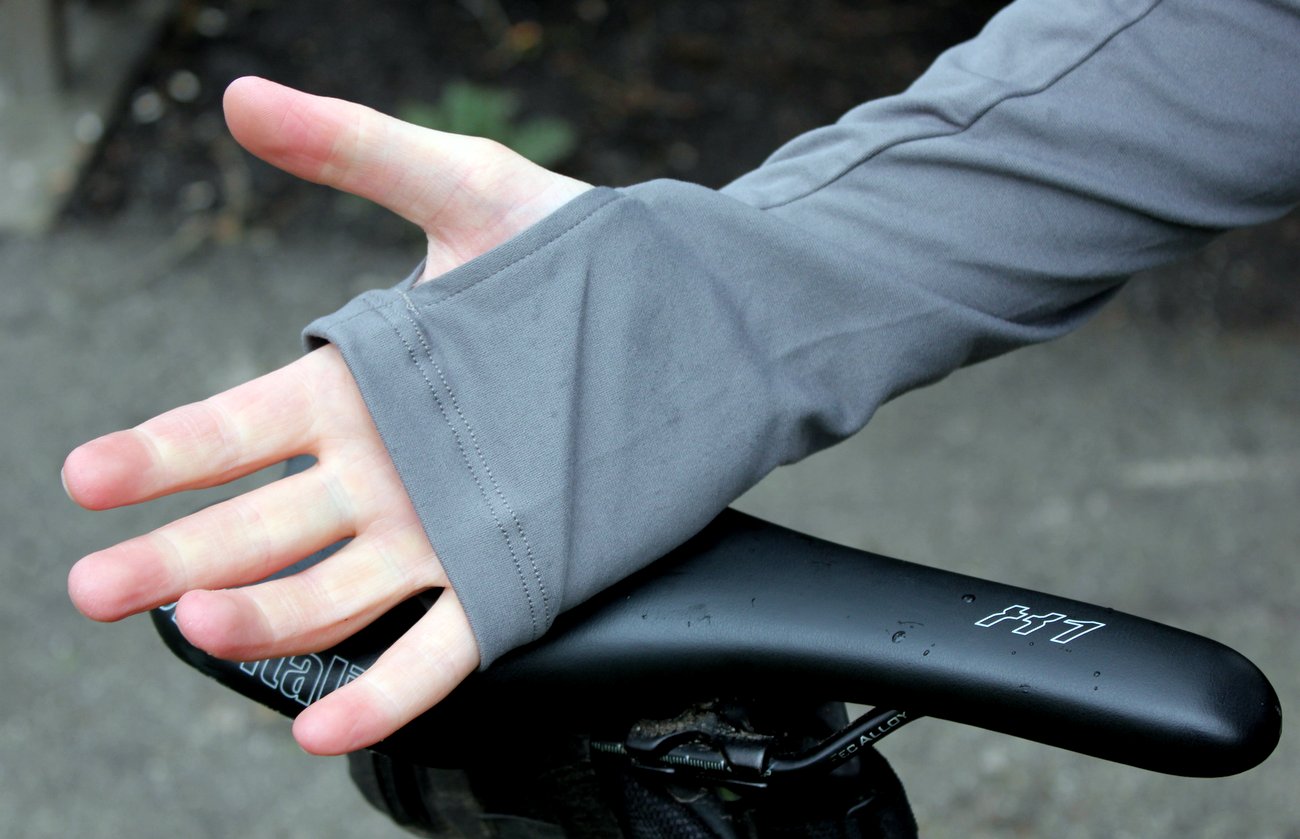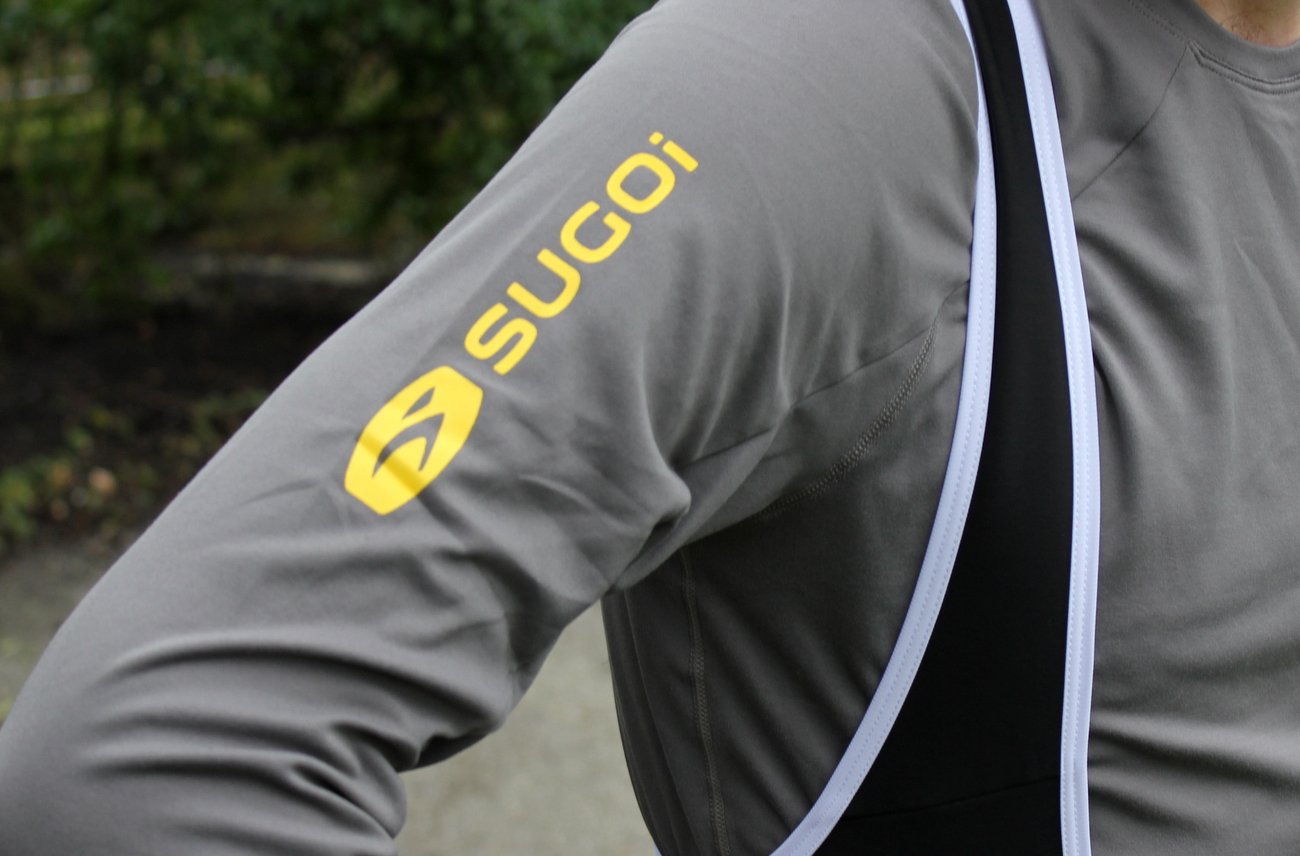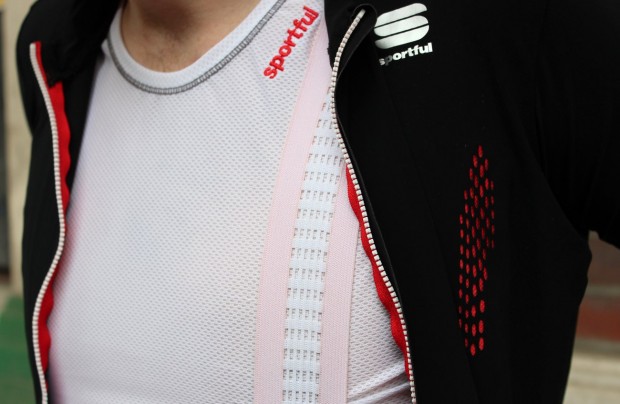Fabric
-

Andrew Talansky shows that base layers aren't just for winter, wearing this one in the heat of last June's Criterium du Dauphiné (Pic: Sirotti)
-

Merino base layers are popular in winter
-

A long sleeve base layer provides extra protection for your arms, which is a real bonus in winter. this Sugoi base layer has additional thumb loops to further extend coverage
-

Sago's carbon base layer contains both carbon and silver ions for claimed added protection against odour
Fabric
What your base layer is made from will define its qualities.
There are two main players for base layers: merino wool and synthetic fabrics, but recently there has been a notable new addition in the form of bamboo.
Merino
If you haven’t come across merino wool at some point in your riding life, you really need to ask yourself why. Whether it’s socks, arm warmers, knee warmers, jerseys, gloves or base layers, you can get almost any item of bike clothing you could possibly want made out of merino.
The reason merino is so widely used is that it has excellent natural wicking properties, making it great for the sort of kit you wear when you’re exercising in almost any capacity. It’s also very soft, because the fibres are small, unlike some other types of wool which can feel quite coarse next to the skin like the scratchy feeling you get with that woolly Christmas jumper, for example.
Wool also retains warmth when wet (unlike cotton, for example), so even if your base layer gets damp, you won’t start to shiver quickly like you would if you’d decided to layer up with a cotton t-shirt – yet another reason to get a proper base layer. Merino can absorb up to a third of its own weight before it feels damp, so you can retain that dry feeling for longer.
But merino does have its downsides. Because it’s insulating qualities are so good, going out in high summer wearing a merino base layer can be a recipe for overheating, and it’ll certainly ramp the temperature up to the point where you’ll be sweating an awful lot. Plus, if you stop while riding you’ll cool down and, as an extension of that, so will your body. Because merino retains moisture so well it’ll cool down quite quickly while you’re sipping on your mid-ride cappuccino and after a while you’ll start to feel chilly, particularly when you start riding again.
The other downside of merino, as we touched on earlier, is weight. Merino is generally heavier than a synthetic equivalent, but it also retains up to a third of its own weight in moisture. That means it can start to feel quite heavy once you’ve been riding in it for a few hours. Finally, merino is generally more expensive than a synthetic fabric.

Synthetics
How about synthetic fabrics, and most frequently and more specifically, polyester? Synthetics are, for the most part, better at wicking than merino. They’re also very quick drying which is a massive bonus as they remain more comfortable for longer as a result.
The final bonus of synthetics is that they’re lightweight. If you’ve ever held a synthetic base layer in one hand and a merino one in the other, the merino layer will almost certainly be noticeably heavier.
But it’s not all positives. Synthetics aren’t as good as merino at heat retention, and won’t be anywhere near as good at retaining heat when they’re wet, one of the attributes that really makes merino stand out. They also have none of the natural anti-bacterial qualities that merino has, which means they may start to smell over time. But on the flip-side once again, they’re machine washable, which some merino base layers – especially 100 per cent wool ones – tend not to be.
Bamboo
In the last few years, bamboo base layers have gradually start to appear in the marketplace. For the most part they’re made from bamboo extract mixed with other materials like Lycra, cotton or even merino.
Bamboo is extremely soft against the skin (great for anyone who finds even merino uncomfortable), has similar anti-bacterial properties to merino, dries quickly and is close fitting. It wicks fairly well – on a level comparative to merino, but not as good as a quality synthetic – and is becoming more popular and therefore easier to find. However, it’s still in its infancy as a base layer material and the quality available varies greatly.

Fabric fit for the season
Chances are you’ll go for something synthetic for the summer, purely because the two most important qualities when its warm out – something that’s high wicking and quick drying – are the two at which synthetics excel. On the flip side, merino is great in winter because of its insulating qualities, and the fact that it retains heat while wet. There are lots of good long-sleeve synthetic base layers out there, though, that will keep your core and arms warm, while retaining a high level of wicking and breathability. Both merino and synthetic fabrics make for effective base layers, it’s about considering what you want the base layer to do and, to some degree, experimenting to find what works for you, in what conditions.
Personally, we never ride without some kind of base layer, so it’s worth investing in a few options to satisfy the demands of the season. In winter, a good base layer is invaluable, and in summer having a high wicking and quick drying layer on stops that horrible wet feeling all over your torso that you can get when you’re working hard in just a jersey. It’ll also be a bonus if you plan on doing a lot of climbing because having less moisture next to your skin means that when you’re going downhill won’t feel as cold. Wind chill always feels harsher when your soaked in sweat.
On the next page we’ll consider the construction of a base layer. Long sleeve, short sleeve or sleeveless?





